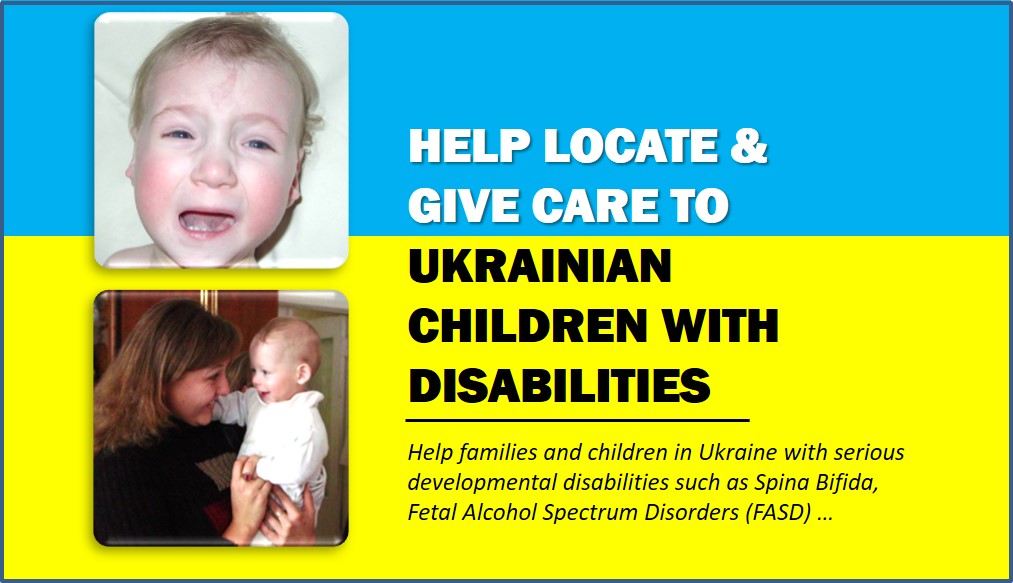 |
|
|
| Down Syndrome is one of the most common forms of mental retardation. It is most often due to an extra chromosome 21 resulting in Trisomy 21. In younger mothers, a Down syndrome child may be due to a chromosomal
defect that may be inherited from either parent. Older women are more likely
to have a child with a chromosomal trisomy such as trisomy 21, trisomy
18, trisomy 13 and other type of anomalies which are not inherited, but often associated with advanced maternal age. For this reason women approaching
35 years of age should know that planning a pregnancy may also call for
prenatal studies.
Early care of Down syndrome children is very important. Early stimulation also helps Down syndrome children develop more fully.
After having a Down syndrome child, even if it is the only occurance in the family,
the risk of having another is increased. For these reasons our team recommends:
- All babies with Down syndrome should have a chromosome study Consultation with a clinical geneticist. A clinical geneticist along
with the pediatrician implement anticipatory health care strategies to
optimize the development and health of a Down syndrome child.
- Prenatal studies of pregnancies subsequent to the birth of a Down syndrome child.
 |
W.Wertelecki, M.D. Updated: May 2004 |
| |
|
Health Supervision
for Children With Down Syndrome
Committee on Genetics, American Academy of Pediatrics, August 2011
 [for Professionals mainly] [for Professionals mainly]
These guidelines are designed to assist the pediatrician in caring for
the child in whom the diagnosis of Down syndrome has been confirmed by
karyotype ... eight pages ... Among the more common physical features
are hypotonia, small brachycephalic head, epicanthic folds, flat nasal
bridge, upward slanting palpebral fissures, Brushfield spots, small mouth,
small ears, excessive skin at the nape of the neck, single transverse
palmar crease, and short fifth finger with clinodactyly. A wide space,
often with a deep fissure between the first and second toes, is also
common. The degree of mental impairment is variable, ranging from mild
(IQ: 50-70) to moderate (IQ: 35-50) ... obstructive sleep apnea (50%-75%);
and thyroid disease (15%). The social quotient may be improved with early
intervention techniques, although the level of function is exceedingly
variable...In approximately 95% of children with Down syndrome ... nonfamilial
trisomy 21 ... 3% to 4% ... extra chromosomal material ... Medical management,
home environment, education, and vocational training can significantly
affect the level of functioning ... Pediatricians may be asked to counsel
a family...FROM BIRTH TO 1 MONTH...FROM 1 MONTH TO 1 YEAR ... FROM 1
YEAR TO 5 YEARS ... FROM 5 YEARS TO 13 YEARS .. .FROM 13 YEARS TO 21
YEARS ...
DOWN SYNDROME
 [for Professionals mainly] [for Professionals mainly]
Comprehensive clinical, cytogenetic, pathogenesis ... an authoritative
source.
The story of Down
Syndrome - Trisomy 21
L. Leshin, M.D. F.A.A.P. , 2003
 [for Professionals mainly] [for Professionals mainly]
and a list of well selected Down
Syndrome related links
Atlantoaxial Instability in Down Syndrome
American Academy of Pediatrics, July 1995
 [for Professionals mainly] [for Professionals mainly]
AAI, also called atlantoaxial subluxation, denotes increased mobility
at the articulation of the first and second cervical vertebrae (atlantoaxial
joint)...The causes of AAI are not well understood ... In its mildest
form, AAI is asymptomatic and is diagnosed using radiography ... Approximately
15% of individuals in the pediatric age group (<21 years old) who
have Down syndrome also have AAI.[2] Almost all of the persons affected
are asymptomatic ... of symptomatic AAI include easy fatiguability, difficulties
in walking, abnormal gait, neck pain, limited neck mobility, torticollis
or head tilt, in-coordination and clumsiness, sensory deficits, spasticity,
hyperreflexia, clonus, extensor-plantar reflex, and other upper motor
neuron and posterior column signs and symptoms ... For this or any screening
program to be worthwhile ... In the pediatric age group, only 41 well-documented
cases have been described in the published literature ... Asymptomatic
AAI, which is common, has not been proven to be a significant risk factor
for symptomatic AAI ... Arguments against screening include the rarity
of symptomatic AAI, inaccuracy in the screening test, the possibility
that patients with abnormal radiographs initially will have normal radiographs
later on ... One study found that children with Down syndrome and asymptomatic
AAI who were allowed to play all sports had no serious spinal cord injuries
or evidence of neurologic deterioration ...
National Down Syndrome Society
National Down Syndrome Society
 [Support Groups] [Support Groups]
A nicely organized general medical information site ... It provides position statements regarding vitamins, Piracetam, Endrocrine
conditions, Alzheimer's, Sexuality, Neurologic deficits and more.
Down Syndrome - Head
Circumference Charts
Greg Richards , Growth Charts for Children with Down Syndrome, August 28, 2001
Down Syndrome Fact Sheet for
Professionals in Ukrainian
I.B.I.S. Birth Defects, 2005
 [Ukrainian] [Ukrainian]
Main diagnostic criteria ... Clinical picture ... Diagnosis ... Prenatal
diagnosis ... Etiology ... Prognosis ... Treatment
Down Syndrome Charts and
Tables in Ukrainian
IBIS Birth Defects, June 12, 2002
 [Ukrainian] [Ukrainian]
Translation of "Growth References: Third Trimester to Adulthood" book
compiled by Robert A. Saul, MD, Joseph S. Geer, MD, Laurie H. Seaver,
MD, Mary C. Phelan, PhD, Kevin M. Sweet, MS, Carolyn M. Mills, MS (Greenwood
Genetic Center)
... Height, Males, 0-36 Months ... Height, Males, 2-18
Years ... Height, Females, 0-36 Months ... Height, Females, 2-18 Years
... Head Circumference ... Ear Length ... Development
Observation
on an Ethnic Classification of Idiots (Classic Paper)
An article by J. Langdon H. Down, M.D., London.
 [for Professionals mainly] [for Professionals mainly]
Those who have given
any attention to congenital mental lesions, must have been frequently
puzzled how to arrange, in any satisfactory way, the different classes
of this defect which may have come under their observation
Prenatal - Amniocentesis -
Screening - AFP - MSAFP
Down
Syndrome - Endocrine Conditions
National Down Syndrome Society
 [Support Groups] [Support Groups]
Individuals with Down syndrome are more likely to have endocrine problems than the general population. The endocrine system is a set of glands in the body including the thyroid, adrenal, and pituitary glands.
Down
Syndrome - Sexuality
National Down Syndrome Society
 [Support Groups] [Support Groups]
Prenatal Testing
for Down Syndrome
L. Leshin M.D. 2007
A crisp, compact (4 page) review
Nuchal Translucency
Fetal nuchal translucency: ultrasound screening for chromosomal defects in first trimester of pregnancy
K H Nicolaides, G Azar, D Byrne, C Mansur, K Marks; PubMed.
Trissomia
do Cromossomo 9 Associada com Aumento da Translucência Nucal (Download
PDF)
Carlos Geraldo Viana Murta and Paulo Roberto Mercon-de-Vargas, Radiologia Brasileira, Volume 34 (#2), March-April 2001
 [for Professionals mainly] [Portuguese] [for Professionals mainly] [Portuguese]
... Relatamos um caso de trissomia completa do cromossomo 9 associada com aumento da translucencia nucal (9,1 mm), diagnosticada por ultra-som na 12a semana de gestacao e confirmada por cariotipo em especime de biopsia do vilo corial. Multiplas anomalias congenitas foram diagnosticadas no exame ultra-sonografico e confirmadas na autopsia. Embora rara, a trissomia 9 deve ser incluida no rol das anomalias cromossomicas associadas com aumento da translucencia nucal ... Unitermos: Trissomia 9. Patologia. Ultra-sonografia pre-natal. Translucencia nucal. Anomalias cromossomicas ...
Nuchal Translucency
A. P. Souka, Archives of Hellenic Medicine, 17(5), September-October 2000, 463-476
The 11–14 week scan offers the opportunity for early assessment of risk of chromosomal abnormality by measuring nuchal translucency and enables the early diagnosis of major structural defects ...
Nuchal
Translucency
Nederlandse Vereniging voor Obstetrie en Gynaecologie, January 2000
 [Dutch] [Dutch]
De meest gebruikelijke indicaties voor
invasieve prenatale diagnostiek zijn: a
een gevorderde maternale leeftijd (36
jaar of ouder), b een belaste
(familie-)anamnese, c een afwijkende
testuitslag bij serumscreening. Deze
indicaties zijn gebaseerd op de
verhoogde kans dat een zwangere een
kind met het syndroom van Down of
een andere chromosomale afwijking
krijgt. Deze kans kan ook worden
geschat door echoscopische meting
van de nuchal translucency vroeg in de
zwangerschap.
NT. De NT bij chromosomaal
normale foetussen is vooral
afhankelijk van de
zwangerschapsduur en bereikt zijn
maximum rond 13 weken. De
mediane NT-diameter neemt toe van
0,7 mm bij 70 dagen tot 1,7 mm bij
91 dagen en daalt naar 1,0 bij 105
dagen zwangerschapsduur. Indien
het foetale chromosomenpatroon
normaal is blijkt de dikte van de NT
gerelateerd te zijn aan een
toegenomen risico op een miskraam ...
Controversies
Cell Therapy
and Down Syndrome as seen by a specialized physician
S. Pueschel, M.D.
"Sicca cell treatment, also known as cell, dry cell, or fetal cell therapy, was
introduced in the 1930s ... there is no evidence that sicca cell therapy has
any beneficial effects ..."
Amino Acid Profiles and
Down Syndrome
L. Leshin,
M.D., 1996
"Many parents ... are hearing about nutritional supplement packages ... no differences
... (to) justified dietary supplementation"
"Obstructive Sleep Apnea
and DS"
L. Leshin, M.D., 2003
Social Issues
Education Information on Down Syndrome
National Down Syndrome Society
 [Support Groups] [Support Groups]
Nicely organized site, includes some terms explained (IEP, LRE, ...)
and a comprehensive listing of organizations, newsletters
and bulletins relating to special education .
If you are seeking basic information
about people with Down Syndrome
Down Syndrome Association, UK
 [Support Groups] [Support Groups]
"The Down Syndrome Educational
Trust"
Down Syndrome Education International and Down Syndrome Education USA (DSE) are internationally-recognized charities dedicated to raising levels of educational achievement among children with Down syndrome. We have been at the forefront of developmental and educational research and evidence-based services improving outcomes for children with Down syndrome for over 30 years.
 [Support Groups] [Support Groups]
Down Syndrome
I.B.I.S. Birth Defects, February 14, 2003
 [Ukrainian] [Ukrainian]
Fact Sheet for Parents in Ukrainian
Advices for Parents of Down
Syndrome children
I.B.I.S. Birth Defects, June 12, 2002
 [Ukrainian] [Ukrainian]
Fact Sheet for Parents in Ukrainian
Publications - Journals
Down Syndrome Resource Foundation
Their mission is to support people living with Down syndrome and their families with individualized and leading-edge educational programs, health services, information resources, and rich social connections so each person can flourish in their own right.
________________________________________________________________________________________________
Last Updated: 2023/03/08
________________________________________________________________________________________________
|





 [for Professionals mainly]
[for Professionals mainly]




